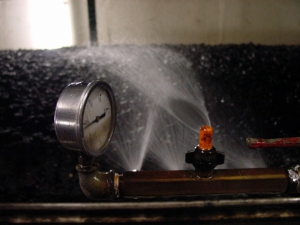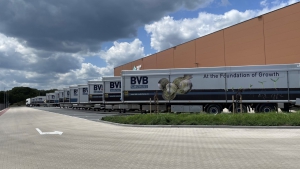Mycelium growth in casing soil (back to basics)
We are observing that the amount of mycelium in the casing soil often leaves much to be desired. Ideally, thick mycelium strands should grow from the bottom to the top of the casing soil, while leaving enough casing soil not yet overgrown with mycelium. This remaining casing soil serves as a water buffer for the compost and mushrooms.
It's crucial to remember that this water buffer also determines how long and how much you can evaporate in the growing room before the casing soil dries out. If the casing soil dries out, you will need to water, even if it's not ideal for the mushroom quality. Therefore, it is important to pay close attention to the mycelium growth in the casing soil.
If there is structurally too much mycelium in the casing soil, a few adjustments can improve the situation. One option is to start ventilating earlier, although this means the mycelium may not reach the surface as much as usual. You can also adjust the watering schedule.
Once the mycelium starts growing from the top layer of compost and the casing material, it is essential to keep the casing soil well-moisturized. Each watering essentially stops the mycelium; weak mycelium struggles with this and can barely continue developing, whereas strong mycelium has fewer issues and continues to grow. In this way, you encourage more strong mycelium and reduce the amount of mycelium in the casing soil.
Our mushroom strains tend to form pins quite spontaneously, so many growers are ventilating extremely slowly. While this isn't necessarily a problem, it's important to realize that as long as the compost temperature is above 23°C, the mycelium will keep growing in the casing soil. Therefore, you should start ventilating earlier or increase circulation to bring the compost temperature below 23°C quickly. Once the compost temperature reaches 23°C, you can reduce circulation and control the number of pins by adjusting the air temperature.
I believe that with this method, you can control the amount of mycelium to some extent without leading to too many pins or a lack of distribution in the first flush. You might also consider using slightly heavier casing soil.
Slightly drier casing soil offers more certainty in terms of mycelium growth. Also, pay attention to covering. Avoid running the pinning axis and leveler too quickly to prevent structural damage. The mixing of the casing should be adequate, but more speed is unnecessary for the pinning axis.
Written by: Jeroen van Lier | Total Mushroom Service
Water, the ongoing discussion
If one wants to start a discussion with a grower (or with a consultant), start talking about watering.
How much, when and what watering method.
To make any sense though, you first have to define the period. There is watering on casing soil and watering over mushrooms and between flushes.
This blog is about watering on the casing soil during the incubation period. The water given in that period is to bring the casing soil up to the maximum moisture level and to keep the compost at the right moisture.
A good phase 3 compost at the moment of casing will be around 60% in moisture. For white strains that can be up to 3% higher, brown strains prefer 1 or 2% drier. It is not possible to bring the compost to a much higher moisture level by watering it after filling. It is possible to give water into the compost but that will be free water which has to disappear during the fructification period.
2 up to 4 litres of water can be given into the compost at filling or later but that should be the maximum. Even if it is necessary to cool the compost. This can better be done by giving water into the casing and let it evaporate with fresh air and circulation.
Casing soil itself can handle up to 7 litres per m² plus the water that was originally in the casing. To be sure, we talk about a casing containing white and black peat.
More than 7 litres will evaporate, go into the compost or down the drain.
Considering that the evaporation can be around 2 litres per m² per day, the loss with evaporation is about 10 litres. If you count the loss of dripping, the water staying in the compost and the evaporation you come to a figure of about 25 litres of water. In practical situations this means a total amount of water between 20 and 30 litres average. Depending on the farm and the time of the year. Growing drier often means a loss of production and growing a lot wetter means problems in growing, mainly in the outgrow of mushrooms.
Another thing to watch for is the watering method. Make sure that the pressure of the water onto the casing is not too high. Too many times I see a casing with a damaged surface which will give problems in the evaporation.
Every system has a different pressure and if you are not sure, ask the manufacturer. Regularly cleaning of the nozzles is something will help maintaining the right pressure and the right adjustment of the watering trees, looking at distance and height according to the casing level.
Keep watering but do not take it over the top!!
Company visit BVB Substrates
Last week on the 5th of July we visited BVB Substrates in Wanssum, the Netherlands. We had the privilege of getting a tour from Hans Nendels, the Business Specialist for mushrooms at Kekkila-BVB. With Hans as our guide, we were able to witness first-hand the company's new location, innovation, machinery, and automated processes. Walking through the facility almost felt like we were on the moon, with the soil surrounding us at every turn.
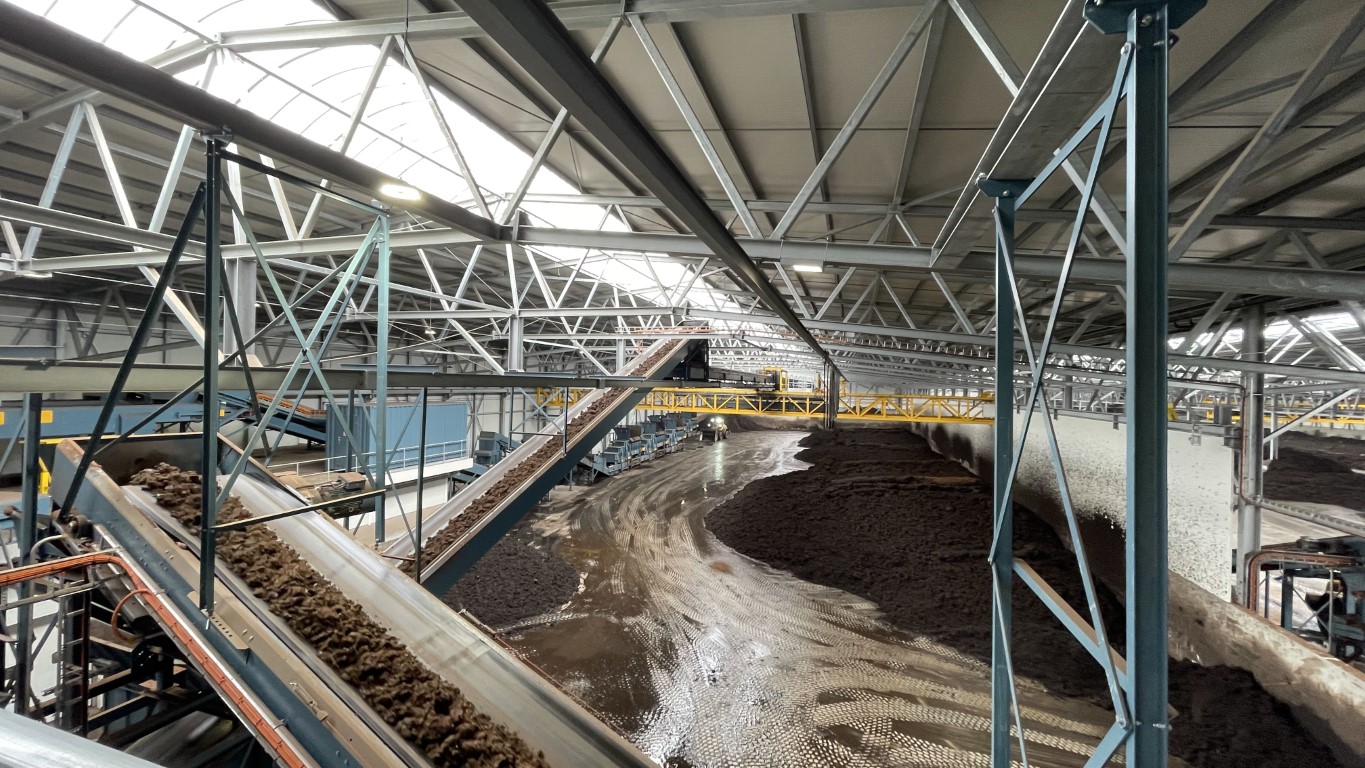
Casing soil
BVB Substrates (the brand name), known for producing high-quality casing soil for mushroom growers worldwide, impressed us with their dedication to innovation and cutting-edge technology. The company offers casing soil in different densities and moisture levels, carefully tailoring its products to meet the needs of organic farming and various mushroom species.
During our tour, Hans explained that BVB Substrates uses deep-dug peat combined with frozen black and white peat to create their casing soil. To ensure the right pH level, sugar beet lime is incorporated into the mixture. The company pays great attention to detail, creating customized mixtures for growers who handpick their mushrooms and developing casing soils for mechanical harvesting. They are producing 8.000 m3 of soil every week and around 400.000 per year.
Quality Control
A standout aspect of BVB Substrates' operation is its commitment to quality control. They have their own spray tables and follow a stringent assessment method, carefully evaluating properties such as water uptake capacity, pH level, and adhesive strength. This dedication to constant quality checks ensures that growers receive a stable and reliable product.
Strategic Location
BVB Substrates' decision to establish their new facility in Wanssum reflects their understanding of the value of strategic positioning. Nestled near the river Maas, this chosen location offers advantages in both land and water transportation, enabling seamless connectivity to various regions. With convenient access to major transport routes, BVB Substrates can efficiently distribute their casing soil across Europe and to global destinations.
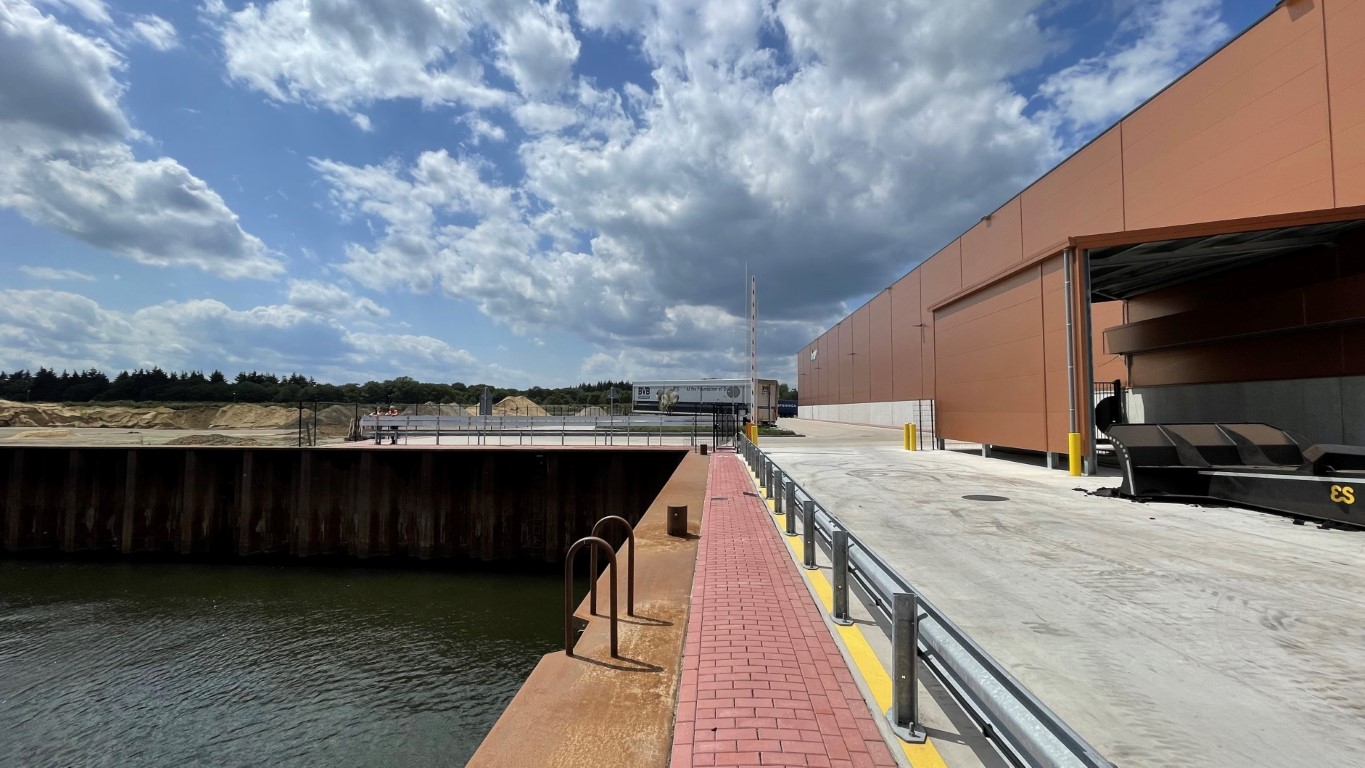
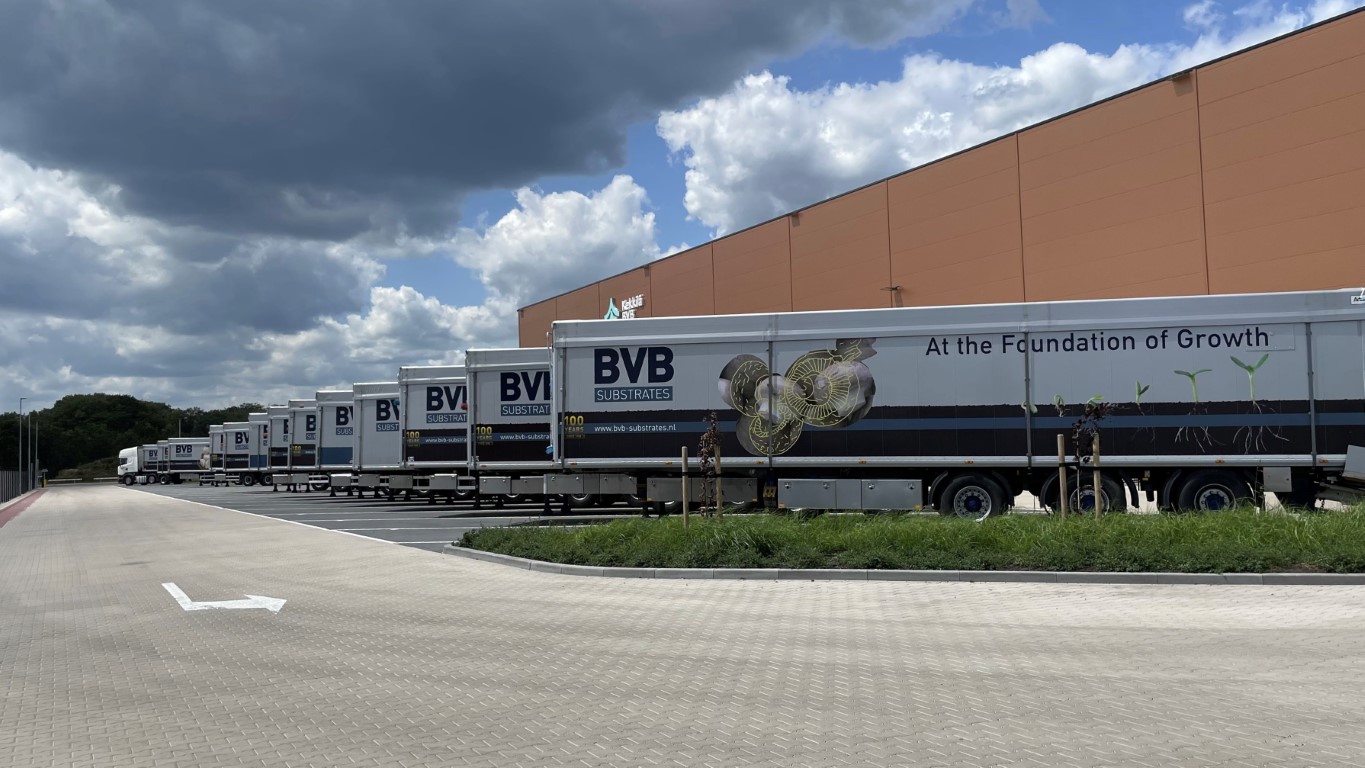
Overall, our visit to BVB Substrates, guided by the experienced Hans Nendels, proved to be an eye-opening experience. The combination of their impressive new location, innovative practices, cutting-edge machinery, and automated processes truly impressed us.
For more information, visit their website https://www.bvb-substrates.com/
Water, the ongoing discussion
If one wants to start a discussion with a grower (or with a consultant), start talking about watering.
How much, when and what watering method.
To make any sense though, you first have to define the period. There is watering on casing soil and watering over mushrooms and between flushes.
This blog is about watering on the casing soil during the incubation period. The water given in that period is to bring the casing soil up to the maximum moisture level and to keep the compost at the right moisture.
A good phase 3 compost at the moment of casing will be around 60% in moisture. For white strains that can be up to 3% higher, brown strains prefer 1 or 2% drier. It is not possible to bring the compost to a much higher moisture level by watering it after filling. It is possible to give water into the compost but that will be free water which has to disappear during the fructification period.
2 up to 4 litres of water can be given into the compost at filling or later but that should be the maximum. Even if it is necessary to cool the compost. This can better be done by giving water into the casing and let it evaporate with fresh air and circulation.
Casing soil itself can handle up to 7 litres per m² plus the water that was originally in the casing. To be sure, we talk about a casing containing white and black peat.
More than 7 litres will evaporate, go into the compost or down the drain.
Considering that the evaporation can be around 2 litres per m² per day, the loss with evaporation is about 10 litres. If you count the loss of dripping, the water staying in the compost and the evaporation you come to a figure of about 25 litres of water. In practical situations this means a total amount of water between 20 and 30 litres average. Depending on the farm and the time of the year. Growing drier often means a loss of production and growing a lot wetter means problems in growing, mainly in the outgrow of mushrooms.
Another thing to watch for is the watering method. Make sure that the pressure of the water onto the casing is not too high. Too many times I see a casing with a damaged surface which will give problems in the evaporation.
Every system has a different pressure and if you are not sure, ask the manufacturer. Regularly cleaning of the nozzles is something will help maintaining the right pressure and the right adjustment of the watering trees, looking at distance and height according to the casing level.
Keep watering but do not take it over the top!!















